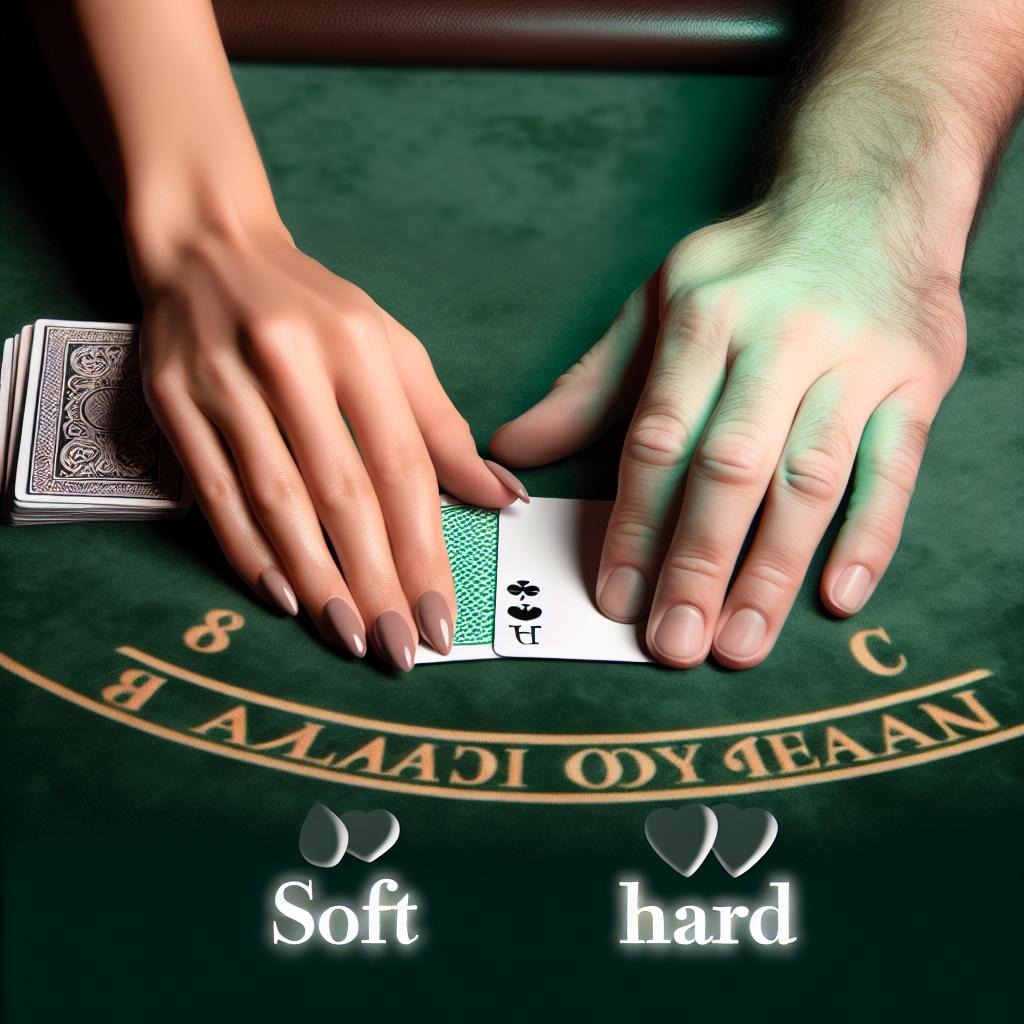Understanding Soft and Hard Hands in Blackjack
In the fascinating and strategic world of blackjack, understanding the nuances of hand categories is key to enhancing your gameplay. In this card game, your ability to distinguish between a “soft hand” and a “hard hand” plays a significant role in shaping your strategies, which in turn can influence the outcome of your sessions. This knowledge arms players with the tools necessary to make informed decisions, reducing risks and maximizing potential gains.
Defining Soft Hands
In the realm of blackjack, a soft hand involves the versatile Ace, a card that provides you with a flexible playing option. It is termed “soft” because the Ace can be counted as either 1 or 11, giving players a buffer against exceeding a total of 21. For example, if you’re holding an Ace and a 6, you possess a “soft 17.” The adaptability encoded in the Ace offers you the opportunity to treat the hand value as a mere 7, should drawing another card put you at risk of surpassing the ideal 21.
This adaptability makes soft hands particularly advantageous, as players can feel safer opting to hit without the immediate danger of busting. Offering more leeway, soft hands provide a tactical advantage, as they allow for additional card drawing without the player’s hand immediately jeopardizing their position with a bust. Thus, players often use soft hands to push towards potentially better outcomes.
Understanding Hard Hands
On the opposite side of the spectrum are hard hands, which lack the soft hand’s flexibility. These are generally more rigid because the Ace, if present, must be counted as 1. Consider the scenario of holding a 10 and a 7; this would be classified as a hard 17. Similarly, if you hold an Ace, a 7, and a 9, the Ace is restricted to a value of 1, transforming what could have been a hopeful soft 27 into a hard 17. Clearly, such situations reduce your buffer against reaching beyond 21.
Hard hands demand a more cautious approach. With every additional card drawn, the risk of busting escalates significantly. Players must assess the risk of hitting versus the potential payoff and decide whether to stand on a solid but unspectacular total or to pursue a slight improvement at the risk of busting. As such, playing hard hands often leads to more conservative playstyles, relying on a keen awareness of the hand’s current standing and the potential benefits of any planned actions.
Strategic Implications
The label of a hand as either soft or hard is more than just a technical distinction; it carries strategic weight. With soft hands, players are generally encouraged to take calculated risks by hitting, buoyed by the security that an Ace brings to the table. Contrastingly, hard hands tend to push players towards cautious and conservative strategies, bearing in mind the increased probability of busting.
To enhance one’s understanding of the myriad strategies associated with soft and hard hands, there is a wealth of resources available online. These resources often include strategy charts or even interactive calculators that facilitate learning and mastering the subtleties involved in playing each type of hand. If you are interested in a deeper dive into the tactics that can be employed, expert analyses and strategic breakdowns are regularly shared on dedicated gambling websites and discussion forums. These digital havens offer insights from seasoned players and strategists who delve into the complex interactions that govern blackjack strategy.
Conclusion
Grasping the distinctions between soft and hard hands is an essential skill for anyone who aspires to excel in the art of blackjack. These concepts are intertwined, deeply embedded in the strategies that separate successful players from those who rely on luck alone. As both theoretical constructs and practical tools, soft and hard hands dictate your possible actions and guide your decisions towards outcomes that are usually more favorable. Whether you are just beginning your journey into blackjack or have been engaging with the game for years, a robust understanding of how to approach each hand type can significantly augment your effectiveness and overall enjoyment during gameplay. By continuing to refine your grasp of these principles, you will find yourself better equipped to navigate the challenges of blackjack and to turn strategic insights into tangible successes.

